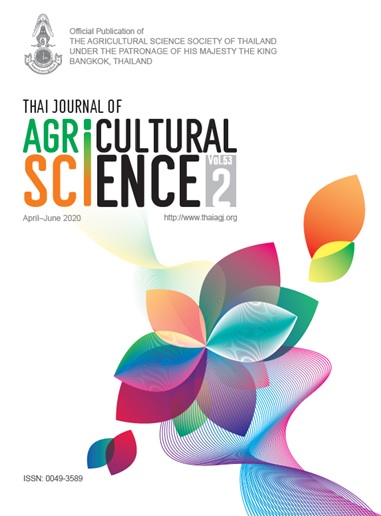Effects of tillage and nutrient management on yield of okra (Abelmoschus esculentus (L.) Moench)
Main Article Content
Abstract
A field experiment of okra (Abelmoschus esculentus (L.) Moench) was conducted in Gazipur under Agro–ecological Zone 28 during kharif 2015. The objectives of the study were to observe the effects of tillage depth and nutrient management on growth and yield of okra and to find out the suitable fertilizer dose for maximizing the yield of okra. The treatments comprised of three different tillage options viz., minimum tillage (0–4 cm; T1), conventional tillage (10–12 cm; T2) and deep tillage (20–22 cm; T3) in combination with four nutrient management packages viz., 100% STB (N100P18K49S12Zn1.75B0.60 kg ha–1) all from chemical fertilizer (M1), 125% STB (N125P22.5K61S15Zn2.19B0.75 kg ha–1) all from chemical fertilizer (M2), 100% STB by using chemical fertilizer 75% (N75P13.5K37S9Zn1.31B0.45 kg ha–1) and rest 25% from compost (4.3 t ha–1) as integrated plant nutrition system (IPNS; M3) and native fertility (M4). The experiment was set up in 2 factors Randomized Completely Block Design having 12 treatment combinations with 3 replications. There were no significant effects of tillage on the yield and yield components of okra although deep tillage produced the highest yield (12.69 t ha–1) followed by conventional tillage. Irrespective of tillage, a highly significant variation was observed for fruit yield due to different fertilizer management packages. The highest green edible fruit yield (14.96 t ha–1) was recorded from M2 where 125% STB fertilizer dose was applied, which was statistically identical to M3 (IPNS based dose) but significantly higher over rest of the treatments. The lowest fruit yield (7.83 t ha–1) was obtained from M4, which was significantly lower than all other treatments. The yield benefit over M4 was 51.7, 91.1 and 87.6% for M1, M2 and M3, respectively. An almost similar trend of results was observed for yield parameters as growth factors. The interaction effect between tillage depth and nutrient management on the fruit yield of okra appeared to be statistically non–significant, but T3 × M3 package gave the highest yield (15.21 t ha–1), which was 30.56% higher over conventional practice (T2 × M1). Highly significant positive linear relationships (R2 > 0.87; P < 0.01) were observed between fruit yield with plant height, fruits plant–1, fruit length and branch plant–1. Present fertilizer recommendations for okra should be updated by increasing 25% more nutrients. Organic manure as compost at 4.3 t ha–1 in combination with 75% STB chemical fertilizer dose employing medium depth tillage appeared to be remunerative in augmenting the yield and economic return. For eco–friendly agriculture, IPNS package (M3) with medium depth tillage may be the best option. Thus, the said package may be recommended for maximizing the yield of okra and sustaining the soil health.


